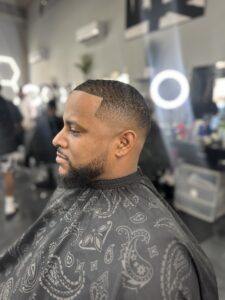Techniques for Achieving Professional-Grade Results
In the ever-evolving world of digital media, the role of motion graphics has become increasingly significant. Whether for advertisements, explainer videos, or social media content, motion graphics add a dynamic element that static images cannot match. For businesses and brands, achieving professional-grade motion graphics is paramount to standing out in a crowded marketplace. This article explores the techniques and best practices that motion graphics agencies employ to master animation quality and deliver exceptional results.
Understanding the Basics of Motion Graphics
Motion graphics are a blend of graphic design and animation. They often incorporate text, shapes, and images, brought to life through movement. Unlike traditional animation, which focuses on storytelling, motion graphics are typically used to convey information and engage audiences quickly and effectively.
Key Components of Motion Graphics
- Design Elements: These include typography, icons, logos, and other visual elements that need to be animated.
- Animation Principles: Motion graphics follow the same foundational principles as traditional animation, such as timing, easing, and anticipation.
- Software Tools: Professional-grade motion graphics are often created using industry-standard software like Adobe After Effects, Cinema 4D, and Blender.
Techniques for Achieving Professional-Grade Results
Achieving high-quality motion graphics requires a combination of creative skills, technical knowledge, and meticulous attention to detail. Motion graphics agency here are some key techniques that motion graphics agencies use to ensure their work stands out.
1. Storyboarding and Planning
Before diving into animation, a well-thought-out plan is essential. Storyboarding allows the agency to visualize the sequence of animations and make necessary adjustments before production begins. This step involves:
- Sketching Key Frames: Drawing the main frames of the animation to outline the flow and transitions.
- Mapping Out Timing: Determining how long each segment will last to ensure a smooth and coherent narrative.
- Identifying Key Elements: Highlighting crucial visual elements that will drive the animation.
2. Emphasizing Design Consistency
Consistency in design is critical for professional-grade motion graphics. This includes maintaining a cohesive color scheme, typography, and visual style throughout the animation. Techniques to achieve this include:
- Creating Style Guides: Developing a comprehensive style guide that outlines the design principles, color palettes, and typography to be used.
- Using Templates and Libraries: Utilizing pre-designed templates and libraries for recurring elements to maintain consistency and save time.
3. Mastering Animation Principles
Motion graphics agencies must master the fundamental principles of animation to create fluid and engaging visuals. These principles include:
- Timing and Spacing: Ensuring that movements happen at the right speed and with appropriate spacing to convey realism and dynamism.
- Easing: Applying ease-in and ease-out effects to make animations more natural and less mechanical.
- Anticipation and Follow-Through: Creating a sense of anticipation before an action and ensuring follow-through to enhance the realism of movements.
4. Utilizing Advanced Software Features
Professional-grade motion graphics are often the result of leveraging advanced features in animation software. Some techniques include:
- Keyframe Animation: Creating animations by setting key points and letting the software interpolate the in-between frames.
- Motion Tracking: Using motion tracking to match the movement of animated elements with live-action footage.
- Particle Systems: Implementing particle systems to create complex effects like explosions, smoke, or rain.
5. Incorporating 3D Elements
While 2D motion graphics are common, incorporating 3D elements can add a layer of sophistication and depth. Techniques include:
- Modeling and Texturing: Creating 3D models and applying textures to make them look realistic.
- Lighting and Rendering: Using lighting techniques to enhance the appearance of 3D elements and rendering them to integrate seamlessly with 2D graphics.
- Compositing: Combining 3D and 2D elements to create a cohesive final animation.
6. Sound Design and Music
Sound is a crucial component of motion graphics, enhancing the overall impact of the animation. Techniques for effective sound design include:
- Synchronizing Audio: Ensuring that sound effects and music are perfectly timed with the visual elements.
- Using High-Quality Sound Effects: Incorporating high-quality sound effects to add realism and depth to the animation.
- Background Music: Selecting appropriate background music that complements the mood and tone of the animation.
7. Iterative Feedback and Refinement
Achieving professional-grade motion graphics often involves multiple rounds of feedback and refinement. This process ensures that the final product meets the client’s expectations and maintains high quality. Steps include:
- Client Reviews: Regularly presenting work-in-progress animations to clients for feedback.
- Internal Quality Checks: Conducting internal reviews to identify and address any issues or areas for improvement.
- Revisions and Tweaks: Making necessary adjustments based on feedback to enhance the final animation.
The Role of a Motion Graphics Agency
Motion graphics agencies play a pivotal role in delivering high-quality animations that meet the specific needs of their clients. Their expertise in design, animation principles, and software tools allows them to produce visually stunning and effective motion graphics. Here are some key aspects of their role:
1. Understanding Client Needs
A successful motion graphics project begins with a clear understanding of the client’s goals, target audience, and brand identity. This involves:
- Initial Consultations: Meeting with clients to discuss their vision and objectives.
- Research and Analysis: Conducting research to understand the client’s industry, competitors, and audience preferences.
- Creative Briefs: Developing a detailed creative brief that outlines the project’s scope, goals, and deliverables.
2. Creative Concept Development
Once the client’s needs are understood, the agency develops creative concepts that align with their vision. This stage includes:
- Brainstorming Sessions: Collaborating with the creative team to generate innovative ideas.
- Mood Boards: Creating mood boards to visually communicate the proposed style and direction.
- Concept Presentations: Presenting concepts to the client for feedback and approval.
3. Production and Execution
With the creative concept approved, the production phase begins. This involves:
- Design and Animation: Creating the visual elements and animating them according to the storyboard and style guide.
- Sound Design: Adding sound effects and music to enhance the animation.
- Editing and Refinement: Editing the animation to ensure a polished final product.
4. Delivery and Implementation
The final stage involves delivering the completed motion graphics and assisting the client with implementation. This includes:
- File Formats: Providing the animation in various formats suitable for different platforms and uses.
- Implementation Support: Assisting with the integration of the animation into the client’s website, social media, or other channels.
- Post-Delivery Support: Offering ongoing support for any revisions or updates needed after delivery.
Challenges and Solutions
Creating professional-grade motion graphics is not without its challenges. Some common challenges include:
1. Meeting Tight Deadlines
Motion graphics projects often come with tight deadlines. Agencies can address this by:
- Efficient Workflow Management: Implementing streamlined workflows and project management tools to stay on track.
- Scalable Resources: Having a scalable team that can handle increased workloads when needed.
2. Balancing Creativity and Practicality
Balancing creative ideas with practical constraints such as budget and time can be challenging. Solutions include:
- Realistic Planning: Setting realistic expectations and timelines with clients.
- Creative Problem-Solving: Finding innovative solutions to work within constraints without compromising quality.
3. Keeping Up with Industry Trends
The motion graphics industry is constantly evolving, and staying current with trends is essential. Agencies can achieve this by:
- Continuous Learning: Encouraging team members to attend workshops, webinars, and industry events.
- Experimentation: Allocating time for experimentation and exploring new techniques and tools.
Conclusion
Mastering animation quality in motion graphics requires a blend of creative talent, technical expertise, and a meticulous approach to planning and execution. Motion graphics agencies play a crucial role in delivering professional-grade results by understanding client needs, developing creative concepts, and employing advanced techniques and software. Despite the challenges, the rewards of producing high-quality motion graphics are significant, offering businesses and brands a powerful tool to engage and captivate their audiences. By continuously honing their skills and staying abreast of industry trends, motion graphics agencies can ensure their work remains at the cutting edge of digital media.









